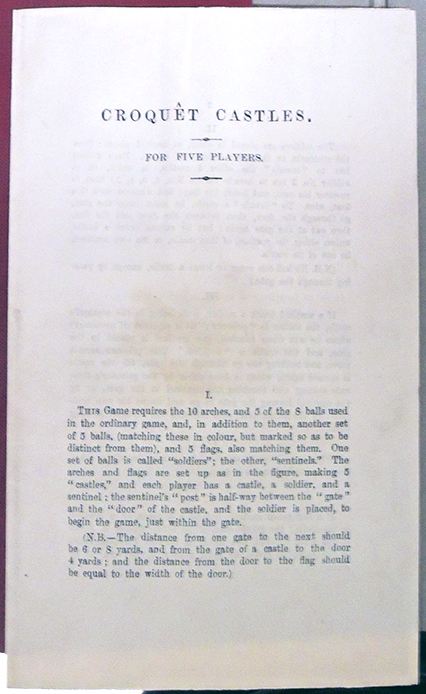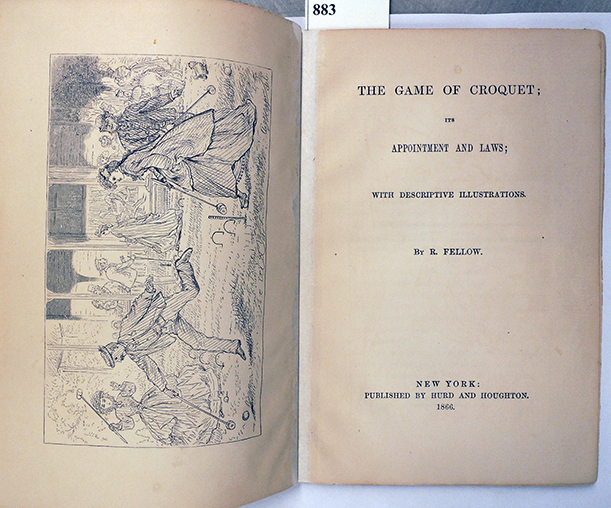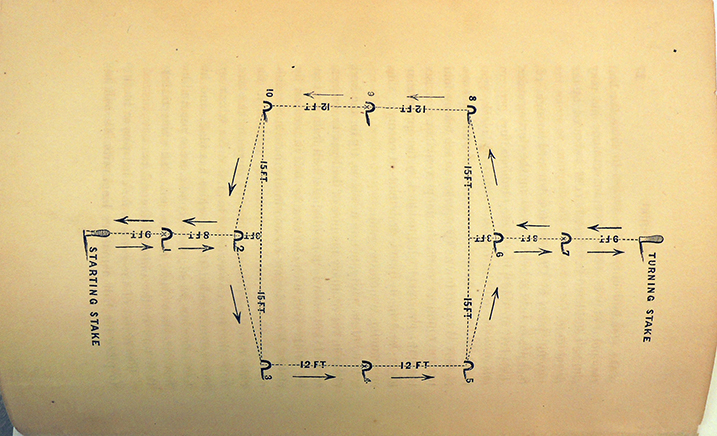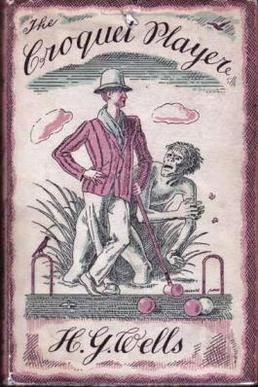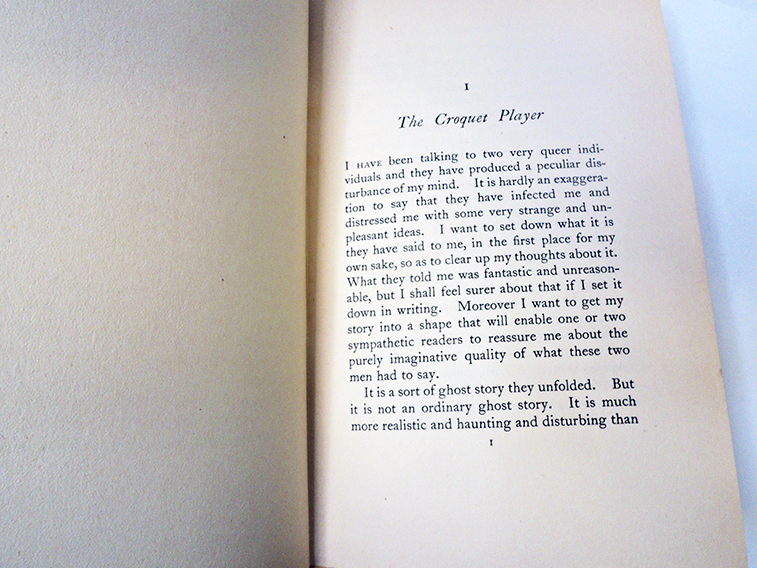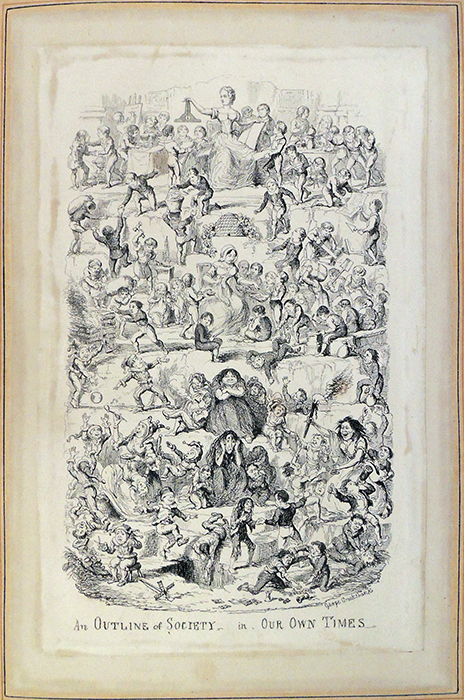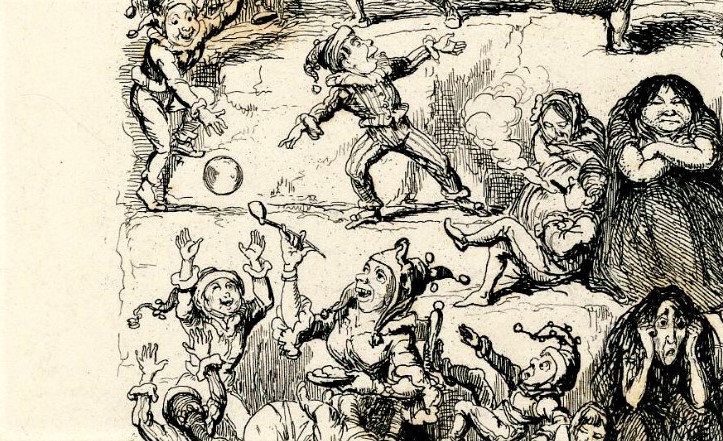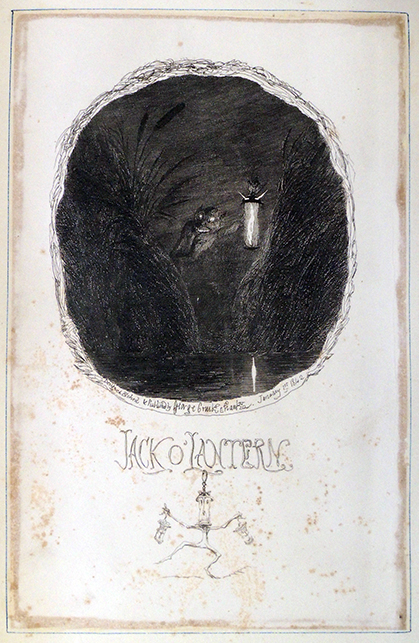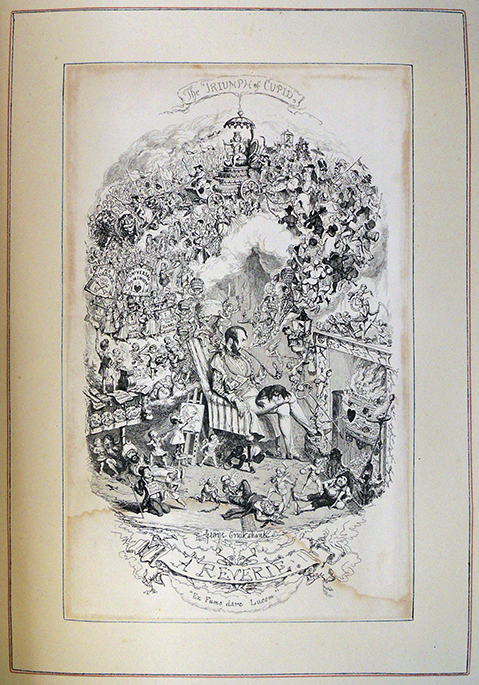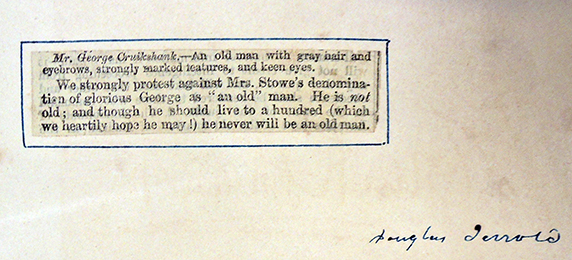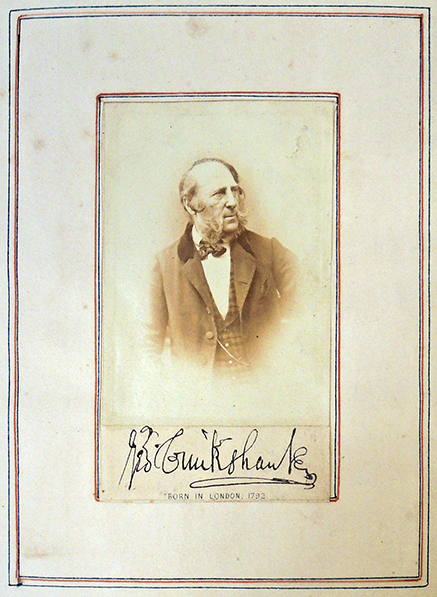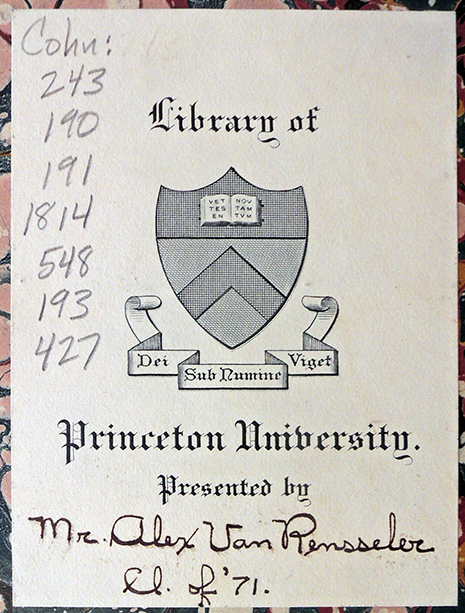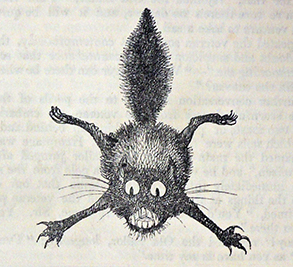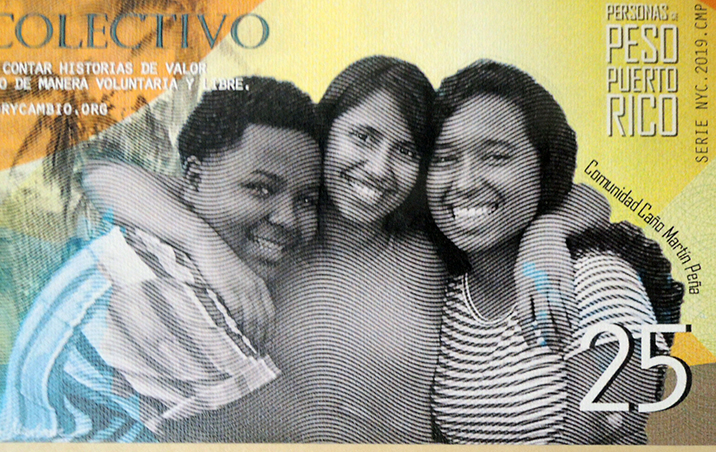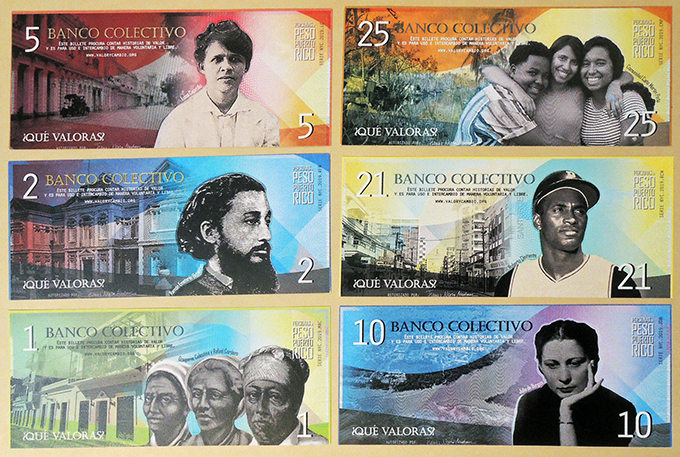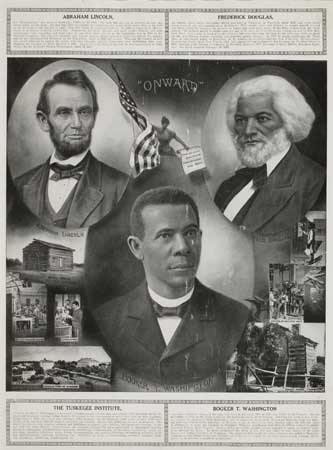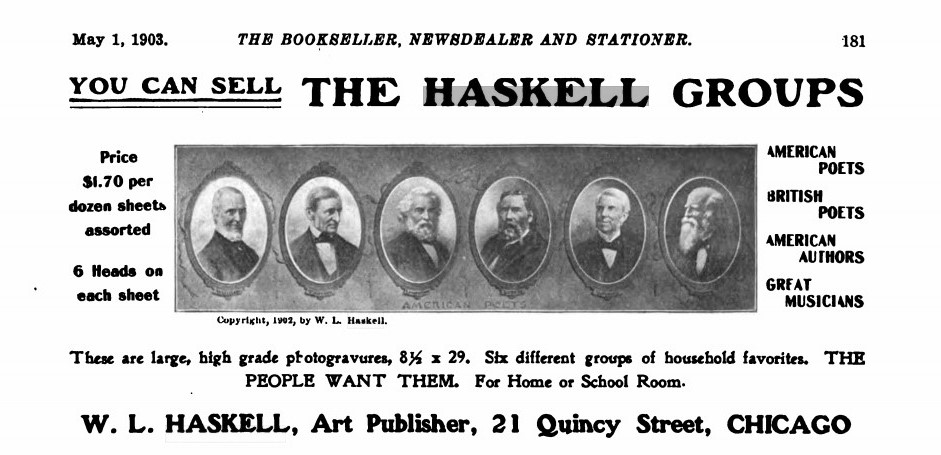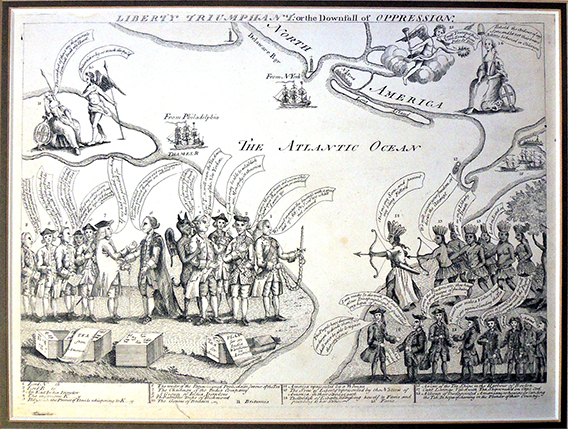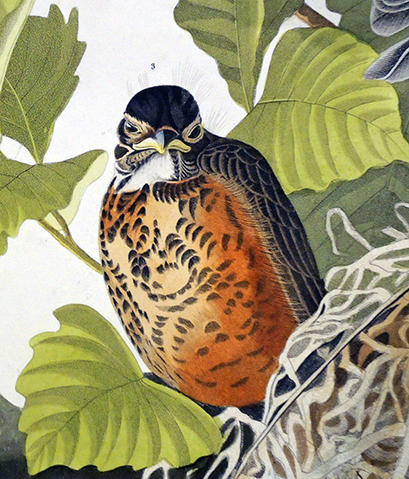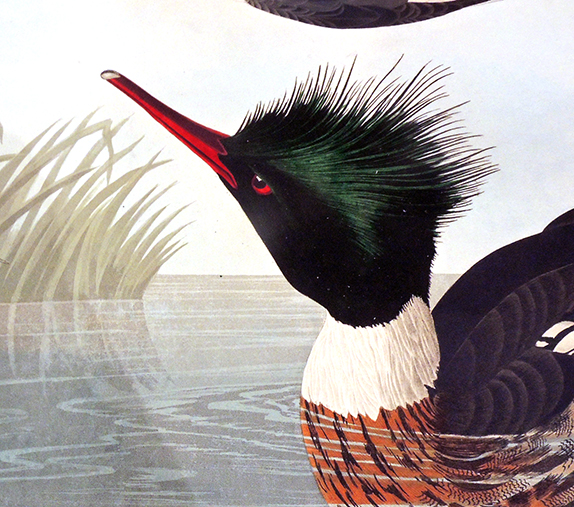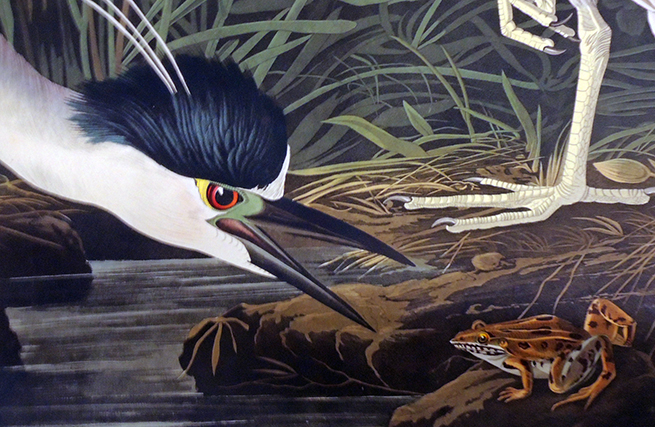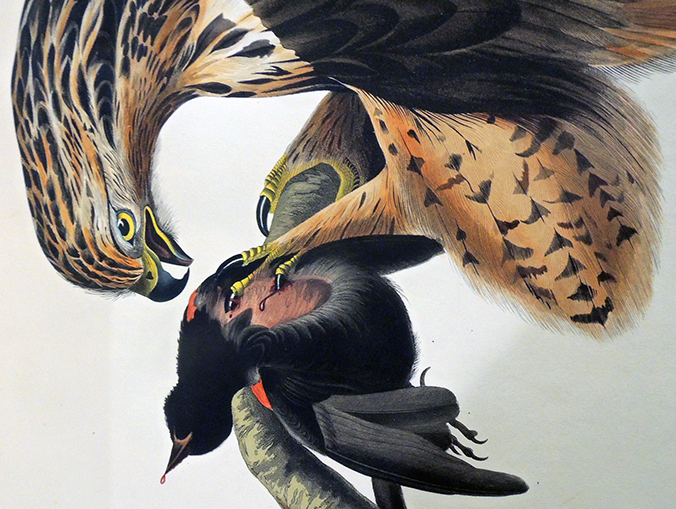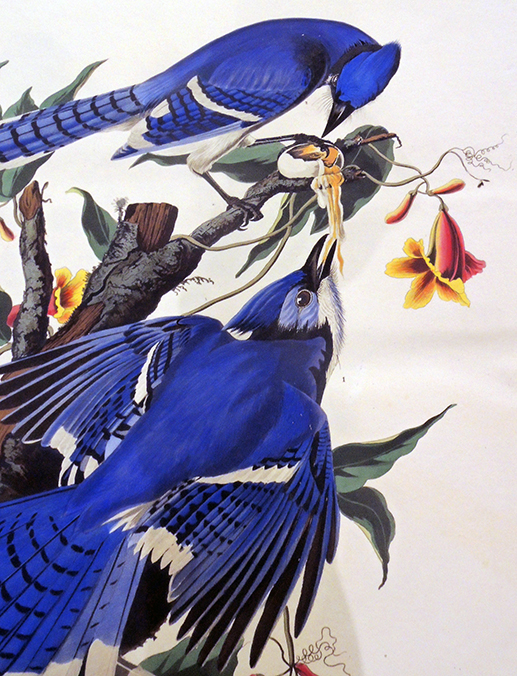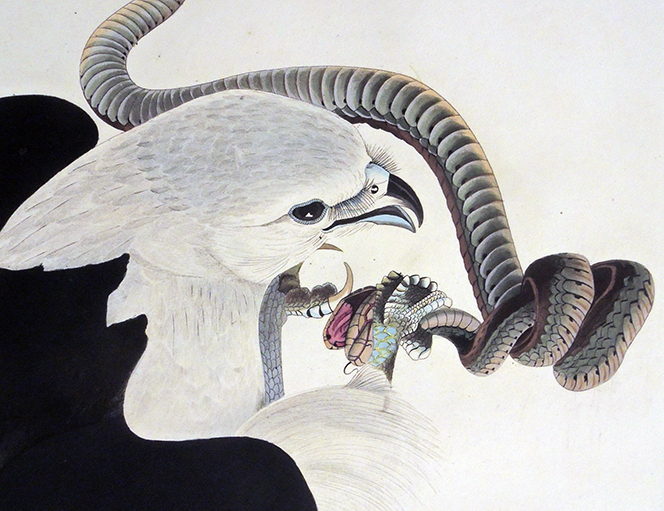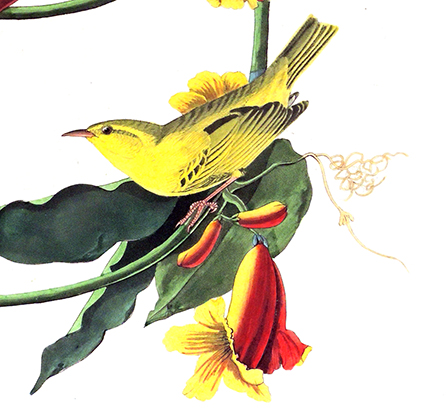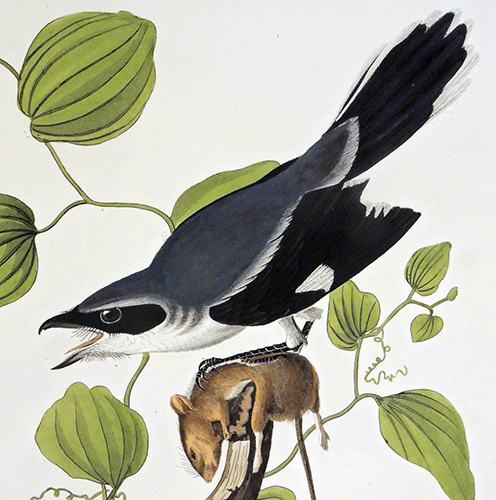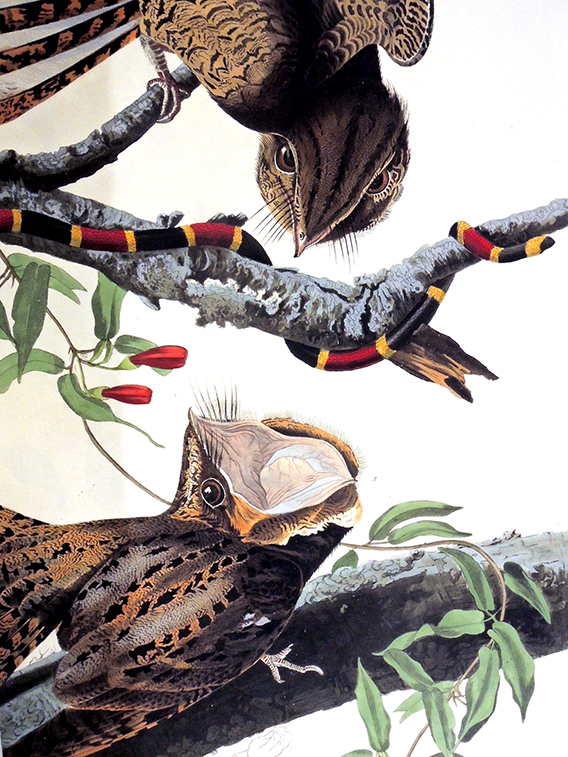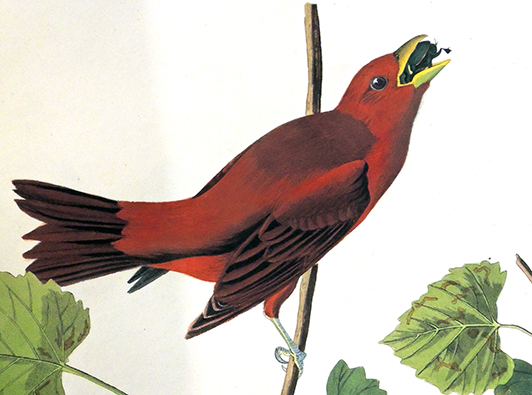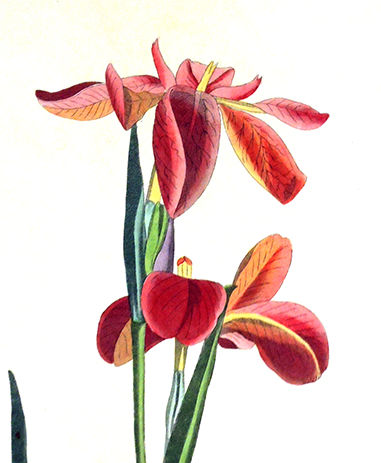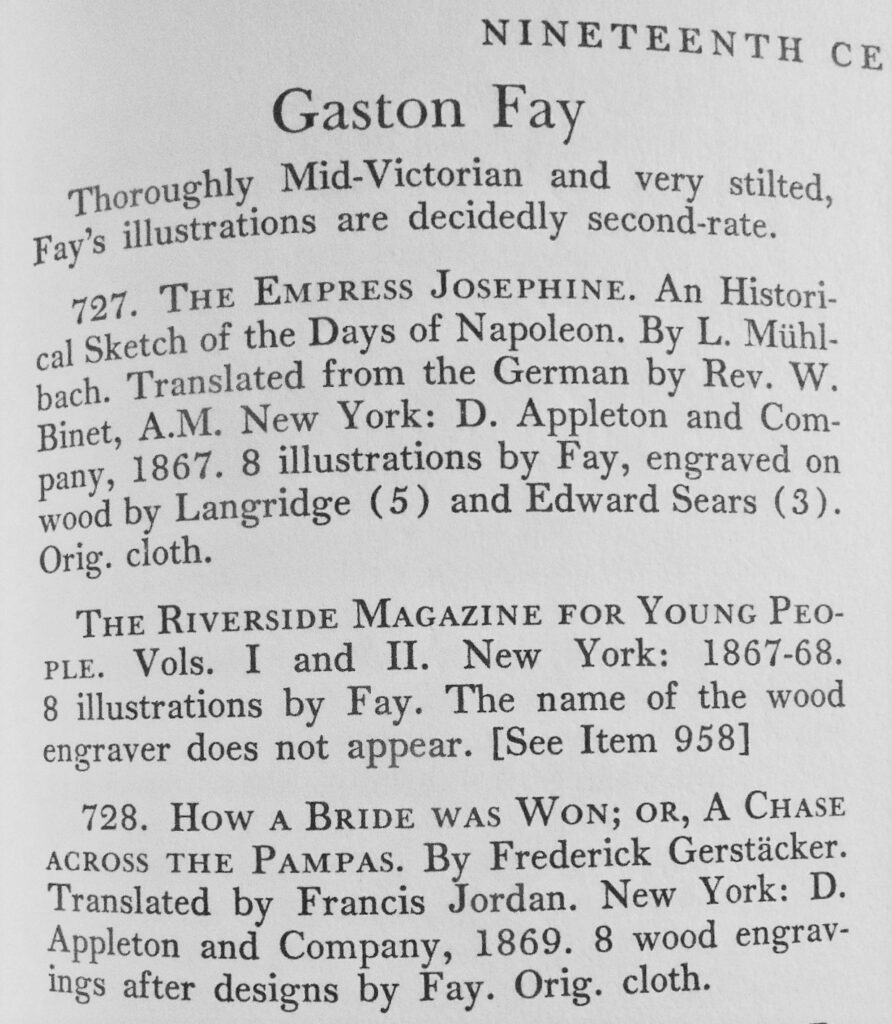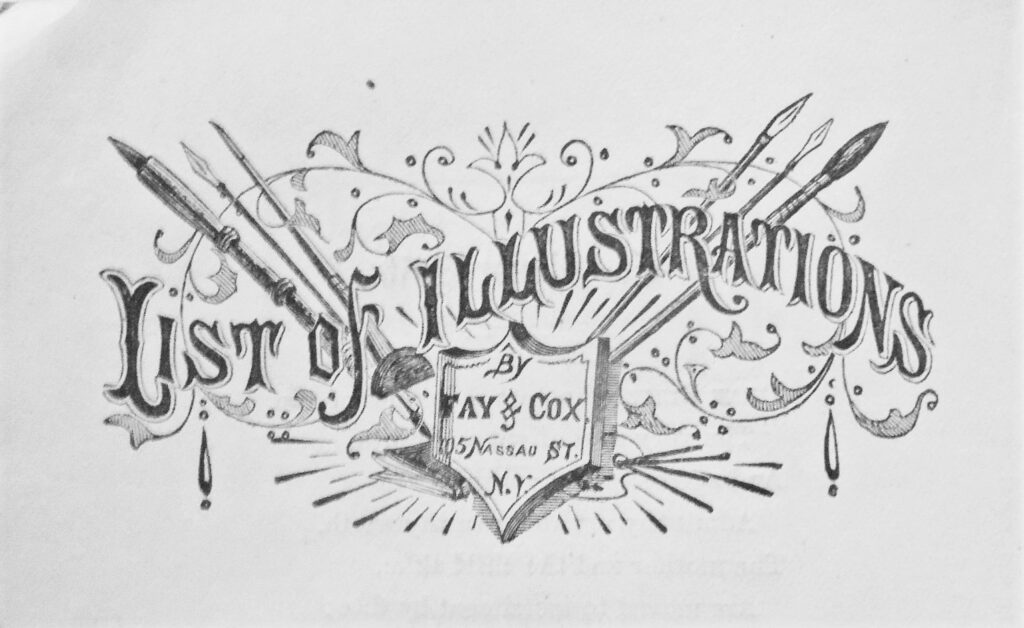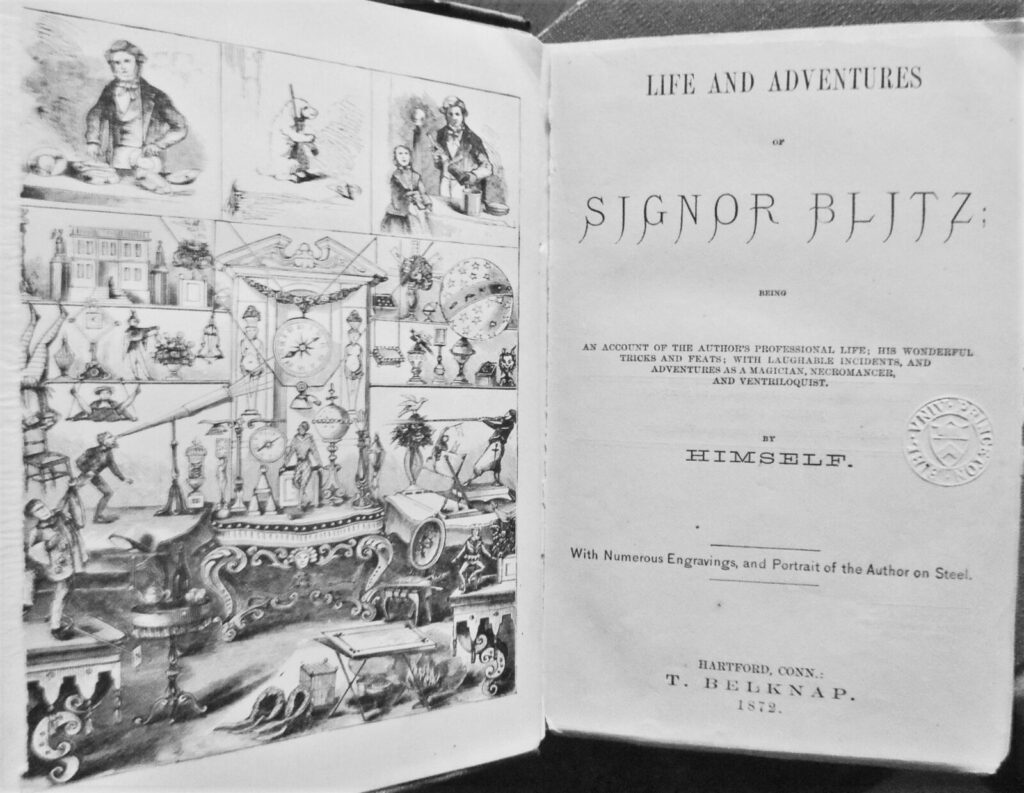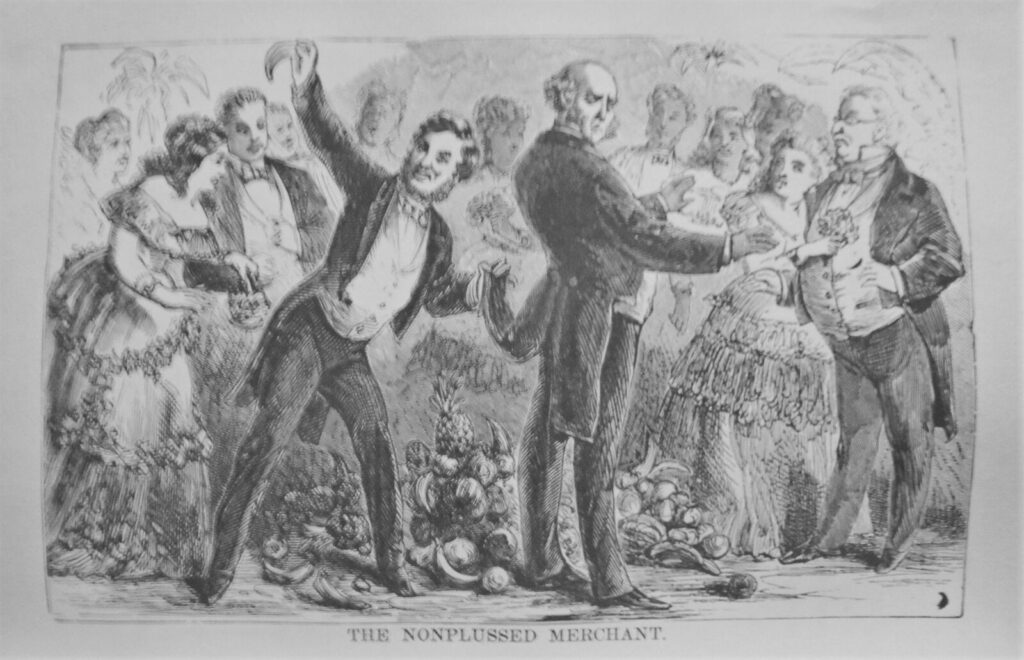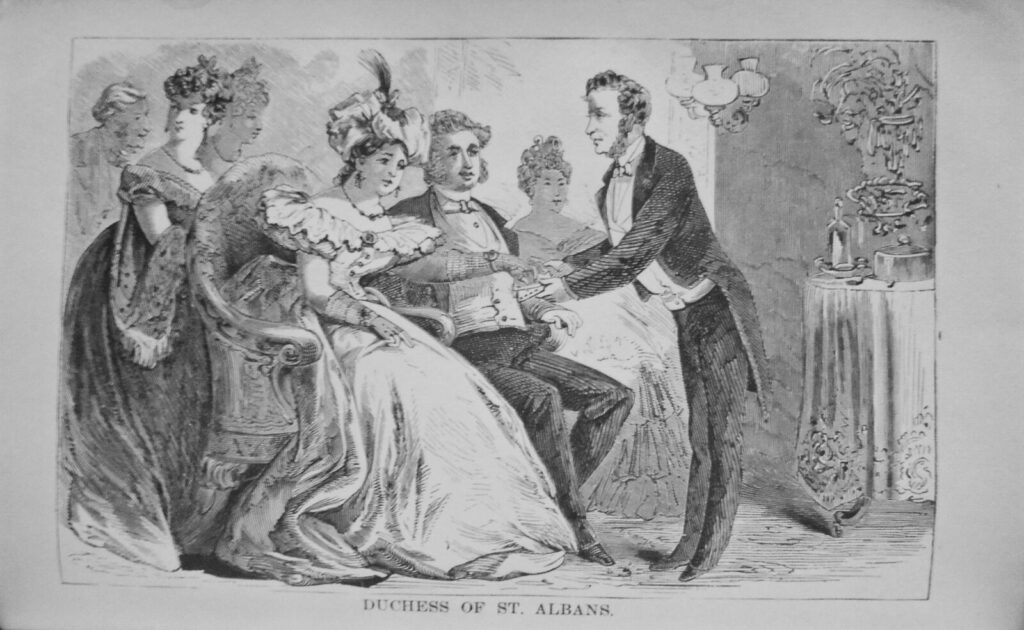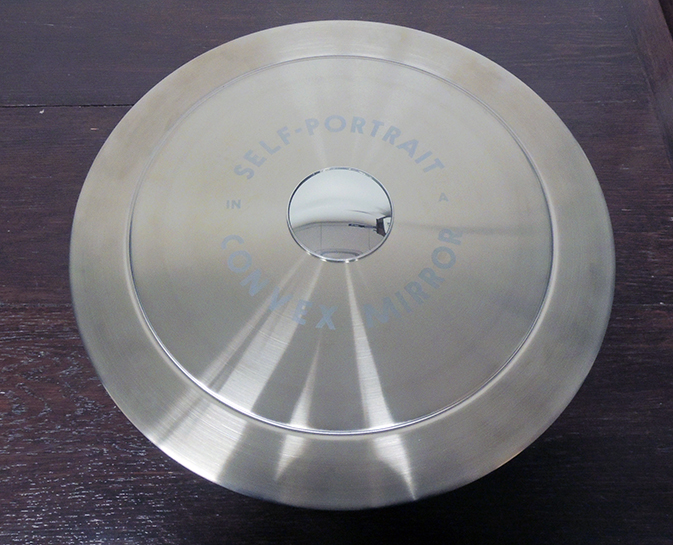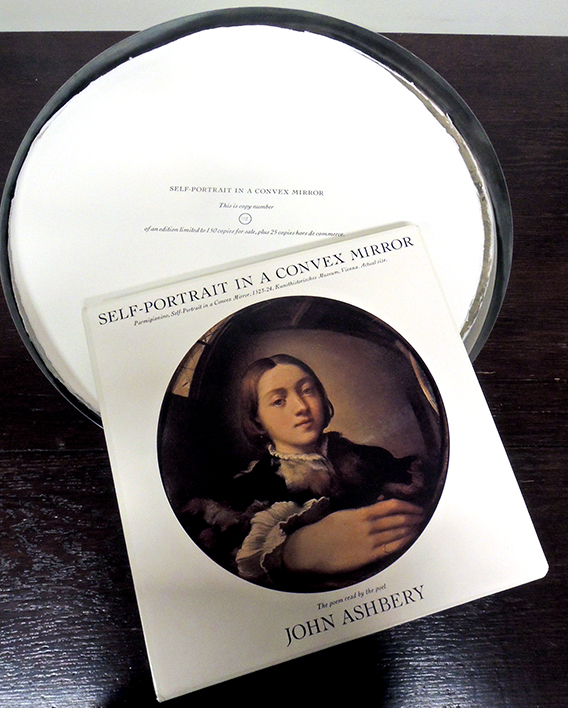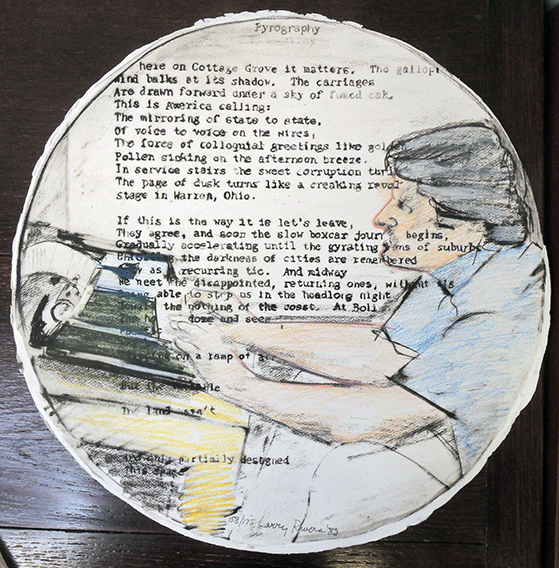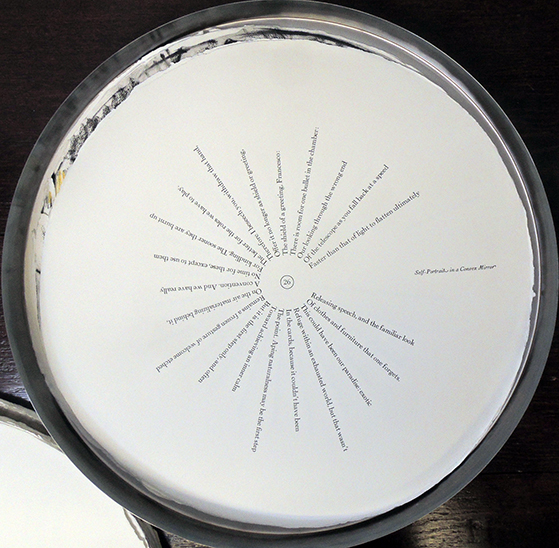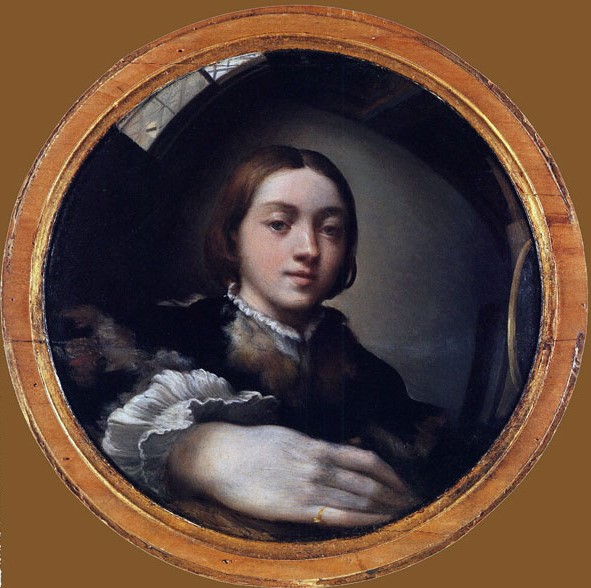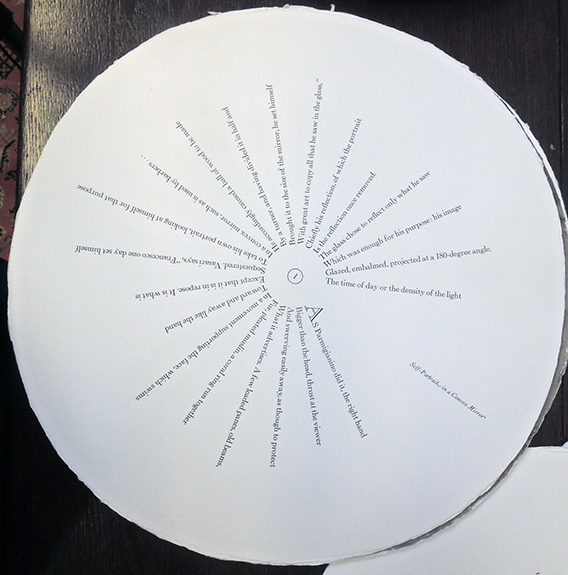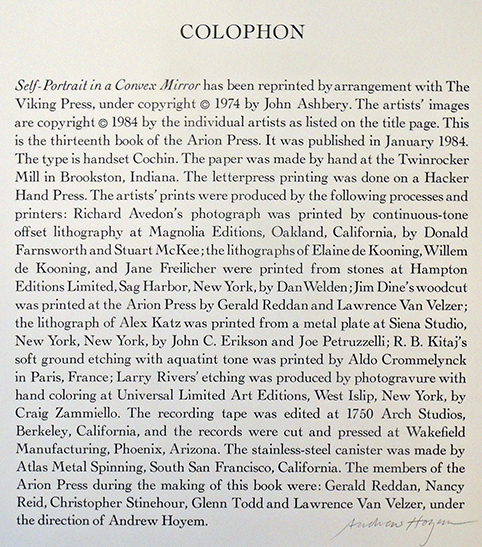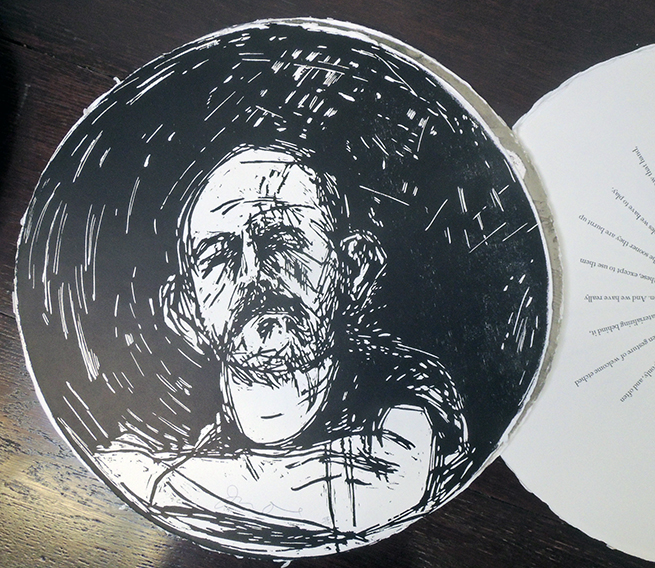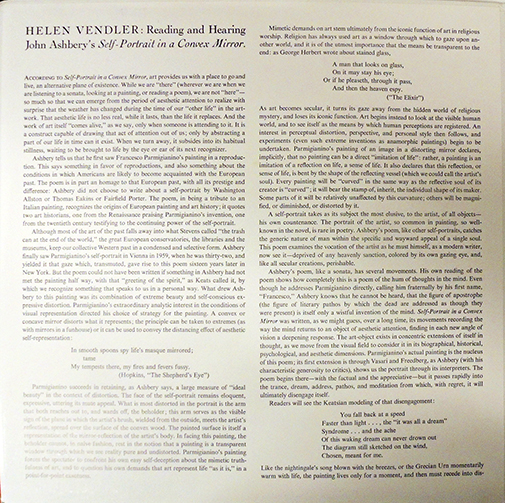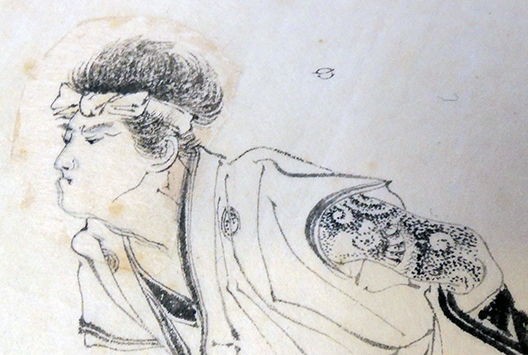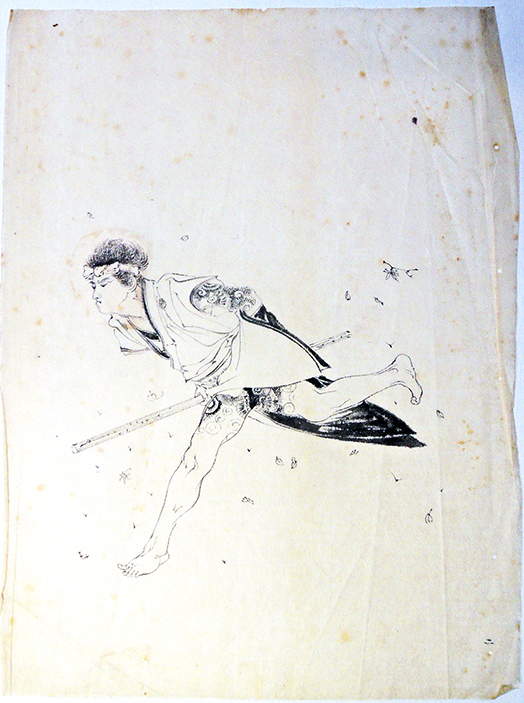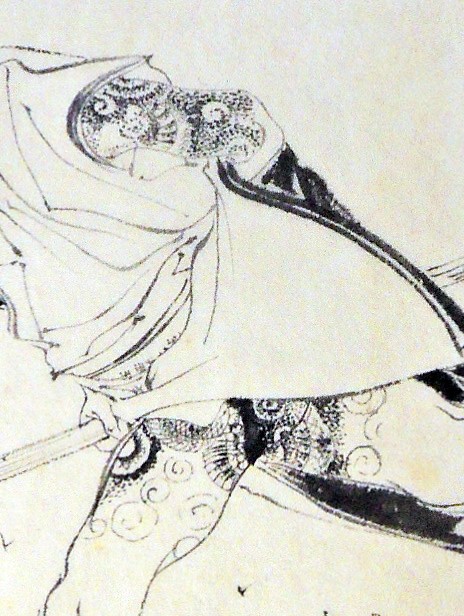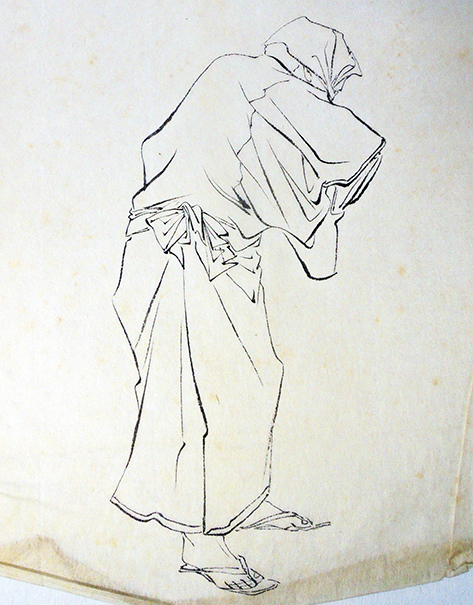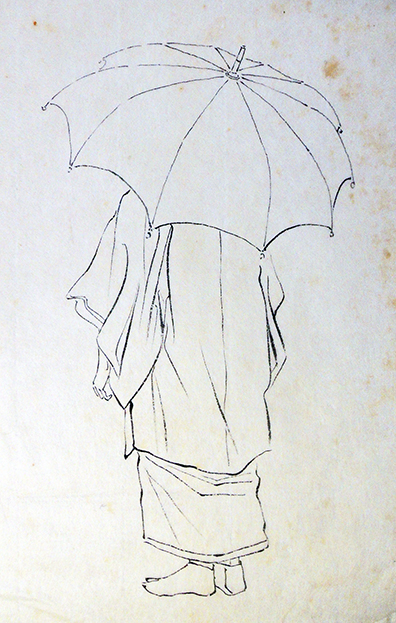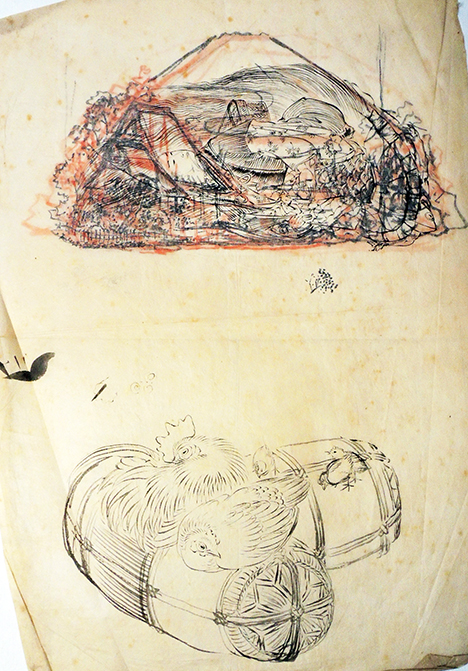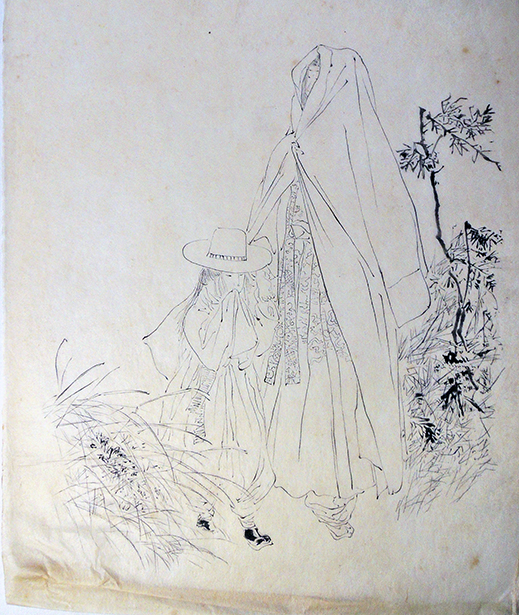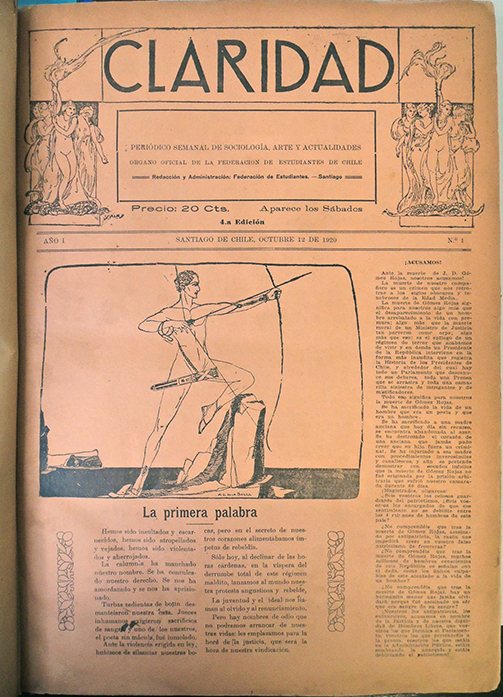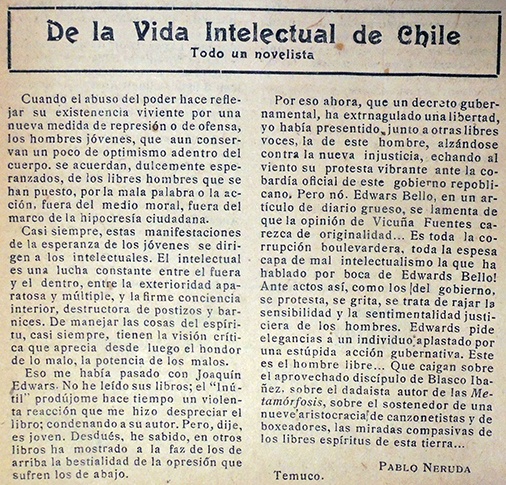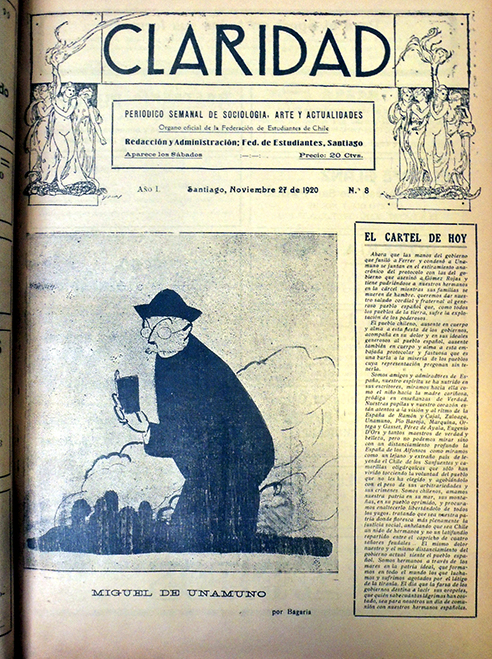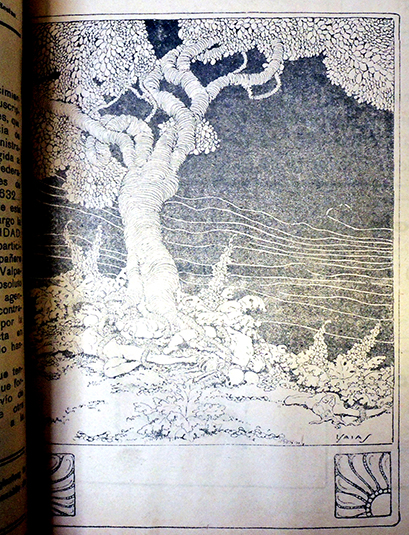 Henry Martin (Class of 1948, 1925-2020) Man playing croquet (no date). Graphic Arts Collection GA 2011.00360. Gift of David Reeves, Class of 1948.
Henry Martin (Class of 1948, 1925-2020) Man playing croquet (no date). Graphic Arts Collection GA 2011.00360. Gift of David Reeves, Class of 1948.
A simple question about James Tissot’s Croquet drypoint today [see below], led down a rabbit hole to many other croquet references.
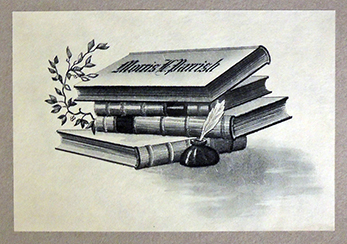 According to The Lewis Carroll handbook (1962), Reverend Charles Lutwidge Dodgson (1832-1898), wrote Croquêt Castles. For Five Players in May 1863 while the Christ Church Mathematical Lecturer. He was also a founding member of the Overland Mallet Club and an avid croquet player. In Dodgson’s version of the game, each player has two balls, which are maneuvered through eight arches and four pegs. Unlike Alice in Wonderland, players take turns rather than playing simultaneously. More rules can be read here: https://www.spudart.org/chicagocroquet/rules/castle/index.html
According to The Lewis Carroll handbook (1962), Reverend Charles Lutwidge Dodgson (1832-1898), wrote Croquêt Castles. For Five Players in May 1863 while the Christ Church Mathematical Lecturer. He was also a founding member of the Overland Mallet Club and an avid croquet player. In Dodgson’s version of the game, each player has two balls, which are maneuvered through eight arches and four pegs. Unlike Alice in Wonderland, players take turns rather than playing simultaneously. More rules can be read here: https://www.spudart.org/chicagocroquet/rules/castle/index.html
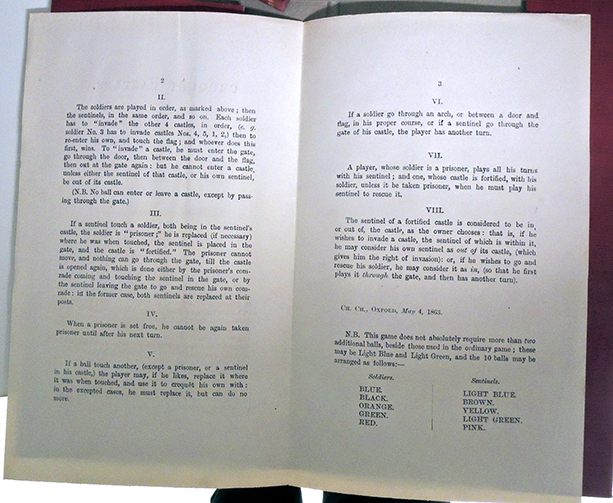
This copy of Dodgson’s pamphlet (one folded sheet) is from the Morris L. Parrish library, now at Princeton rather than Oxford, where it was “decided that the items constituted a shrine rather than a comprehensive collection of original artifacts. They turned [Parrish] down, declaring that theirs was an educational institution rather than a museum.” – Alexander Wainwright, “The Morris L. Parrish Collection of Victorian Novelists,” Princeton University Library Chronicle 62, no. 3 (Spring 2001)
Croquet achieved enormous popularity in the 1860s, first mentioned at Princeton in 1868 when a student wrote, “Croquet has lately been brought into the campus and become quite fashionable. Games may be seen at any time during the day, surrounded by a little crowd of admiring spectators.” —Nassau Literary Magazine June 1, 1868.
 Nassau Literary Magazine June 1, 1870
Nassau Literary Magazine June 1, 1870
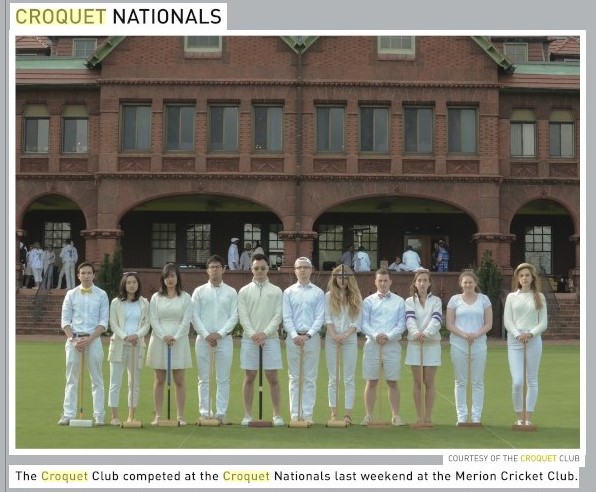 Daily Princetonian April 30, 2015
Daily Princetonian April 30, 2015
The National Croquet Association (NCA), founded in 1879, held its first national tournament in 1882. By April 30, 2015, the Daily Princetonian noted their club was playing in a national tournament.
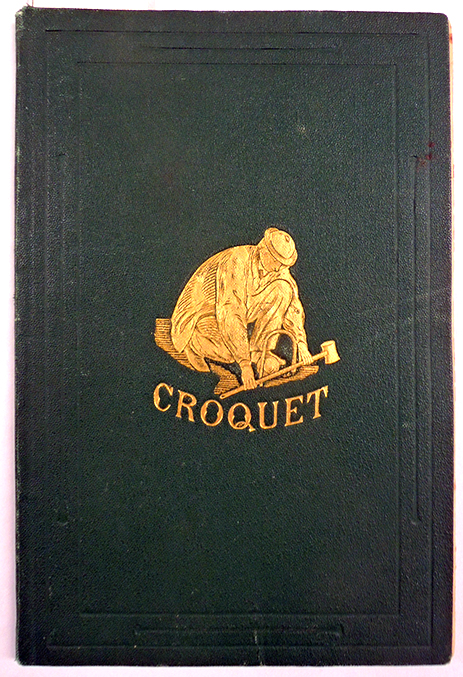 Horace Elisha Scudder (1838-1902), The Game of Croquet: its Appointments and Laws; with descriptive illustrations by R. Fellows [psued.] (New York: Hurd and Houghton, 1866). Frontispiece by Augustus Hoppin (1828-1896). Graphic Arts Collection Hamilton 883
Horace Elisha Scudder (1838-1902), The Game of Croquet: its Appointments and Laws; with descriptive illustrations by R. Fellows [psued.] (New York: Hurd and Houghton, 1866). Frontispiece by Augustus Hoppin (1828-1896). Graphic Arts Collection Hamilton 883
In 1936, H.G. Wells (1866-1946) wrote a ghost story called The Croquet Player, illustrated by Harold Jones (1904-1992). Goodreads describes it:
“This allegorical satire about a man fleeing from his evil dreams was written under the influence of the Spanish Civil War. The croquet player, comfortably sipping a vermouth, listens to the strange & terrible tale of the haunted countryside of Cainsmarsh–a horror which broadens & deepens until it embraces the world.as told to a cocktail drinking croquet player.”
Published London: Chatto & Windus, 1936). Ex 3982.95.3275 1936.
 Laterna magica. Magic Lantern. Lanterne Magique ([Germany?] : E. P. [i.e. Ernst Plank], [1900?]). Metal lantern with 12 glass slides, col. ill. Cotsen Children’s Library Opticals 22898.
Laterna magica. Magic Lantern. Lanterne Magique ([Germany?] : E. P. [i.e. Ernst Plank], [1900?]). Metal lantern with 12 glass slides, col. ill. Cotsen Children’s Library Opticals 22898.
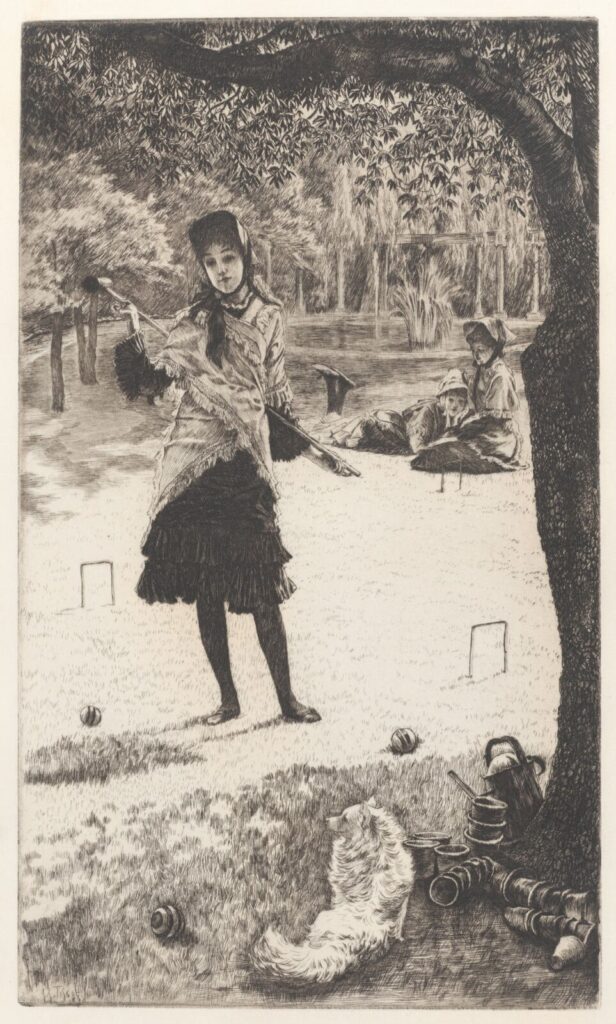 James Tissot (1836–1902), Croquet, 1878. Etching and drypoint. Museum purchase, Felton Gibbons Fund (2013-112) Princeton University Art Museum
James Tissot (1836–1902), Croquet, 1878. Etching and drypoint. Museum purchase, Felton Gibbons Fund (2013-112) Princeton University Art Museum

